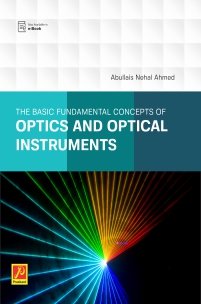PHY-401 | Waves, Oscillations and Acoustics
S.Y.B.Sc. | Sem IV | Physics
Dr K G Kolhe, Dr R G Bavane, Dr R M Shewale, Prof Dr R S Khadayate, Prof G B ShelkeRs.90.00
S.Y.B.Sc. | Sem IV | PHY-401
PHYSICS
Waves, Oscillations and Acoustics
We are very glad to present the book “PHY– 401 : Waves, Oscillations and Acoustics’ in the hands of SYBSc students. The book is strictly written and complied according to the semester pattern syllabus framed by the Board of Studies in Physics, KBC NMU Jalgaon, for Second year BSc to be implemented from June 2019 and is written in lucid, simple language giving exhaustive details. Questions of various types are included at the end of each chapter. This will help in generating interest and thorough understanding of the subject. We hope, this book will be useful for the students and teachers.
Unit 1 Composition of two S. H. M.’s
1.1 Introduction
1.2 Composition of two S.H.M.s of equal frequencies along same line of vibration (analytical method)
1.3 Composition of two S.H.M.s of equal frequencies acting at right angles (analytical method)
1.4 Composition of two S.H.M.s right angles to each other (time period in the ratio 1:2)
1.5 Lissajous’ Figures – 1.5.1 Demonstration of Lissajous’ figures by Mechanical Method 1.5.2 Demonstration of Lissajous figures by Optical method 1.5.3 Demonstration of Lissajous’ figures by Electrical method
1.6 Uses of Lissajous’ figures
Unit 2 Waves Motion
Introduction, Types of Waves, Characteristics of Wave, Progressive (traveling) waves and its characteristics, Mathematical equation for a progressive wave, Transverse waves on a string, Frequency of fundamental note, Solution of the Wave Equation, Stationary (standing) waves on a string, Important characteristics of stationary waves, Normal modes of a string, Stationary (standing) wave pattern, Difference between progressive waves and stationary waves, Plane Waves
Unit 3 Forced oscillations
3.1 Idea of Forced Oscillations
3.2 Comparison between Damped and Forced Oscillations
3.3 Resonance
3.4 Differential Equation of Forced Oscillations and its Solution
3.5 Amplitude Resonance
3.6 Sharpness of Resonance and Half Width
3.7 Velocity Resonance
3.8 Energy in Forced Oscillations
3.9 Band Width
3.10 Quality factor (Q)
3.11 Forced oscillations in an electrical circuits (Application to Series L-C-R circuits)
Unit 4 Sound
4.1 Sound and its Characteristics – 4.1.1 Musical Sound and Noise 4.1.2 Characteristic of Musical Sound 4.1.3 Measurement of Intensity of Sound 4.1.4 Acoustic Intensity Level Measurement 4.1.5 Acoustic Pressure and its Measurement 4.1.6 Limits of Audibility 4.1.7 Intensity Levels of different sounds 4.1.8 Reverberation and time of reverberation
4.2 Classification of Sound Frequencies
4.3 Production of Ultrasonic Waves
4.4 Mechanical Method
4.5 Method using Piezo-electric effect – 4.5.1 Piezo-electric effect, 4.5.2 Manufacture of Quartz Crystals, 4.5.3 Symbol, Equivalent Circuit and frequency of Quartz Crysal, 4.5.4 Piezo-Electric Oscillator or Generator
4.6 Applications of Ultrasonic Waves
4.7 Doppler Effect – 4.7.1 Sign Conventions 4.7.2 Expression for apparent frequency (n/) 4.7.3 Asymmetric nature of Doppler effect in sound 4.7.4 Doppler Effect in Light 4.7.5 Apparent change in wavelength due to Doppler effect in light 4.7.6 Application of Doppler Effect 4.7.7 Limitations of Doppler Effect
You must be logged in to post a review.




































Reviews
There are no reviews yet.